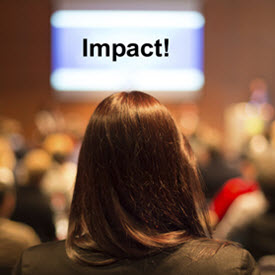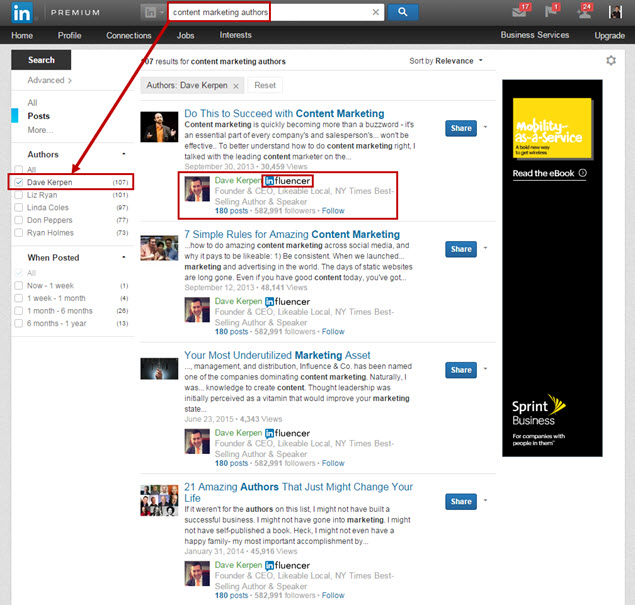LinkedIn and Public Speaking
 How to Use LinkedIn to Become a More Impactful Speaker
How to Use LinkedIn to Become a More Impactful Speaker
If you want to have impact at a speaking event then you need to do two things:
Present in a way that is exciting and engaging
Present significantly insightful information that most (80% +) of your audience does not know.
Let’s be clear. One of the fastest ways to have an audience tune out is to present material that they already know.
The key is to understand your audience and this is where LinkedIn can help.
Research Your Audience with LinkedIn
When you land a gig to speak at an event you need to do research on the audience. The first step should be to ask the organizers for details on who will attend. You can ask where they work. You can ask about their job titles. Now, using this information you can go to LinkedIn and see what content is being produced by people with similar job titles in similar companies and industries.
Using LinkedIn you can determine the influencers and what content they are creating. You can then determine what exposure they may have to the points you intend to make.
In addition, if the audience is not well defined or if the audience has a large variation from the least knowledgeable to the most knowledgeable then it is better to go over people’s heads rather than to dumb it down. You can always help the people who need it with a solid Q&A segment. As the presenter, you can gauge whether more attention may be needed for Q&A and make an adjustment to provide this. Typically, more questions indicate a higher level of interest and this is good. In my experience, a presentation that is perceived as more advanced is considered by the audience to be better than one that is too basic.
To know your audience well is fundamental to delivering a notable presentation and LinkedIn can help you to understand the audience and help you to gain insights into materials for your presentation.
Research Your Topic with LinkedIn
Use LinkedIn to learn about problems and frustrations. Good presenting can come from tension . . . anticipation and then . . . a solution. In addition, good presenting is good storytelling. Once you define your key points then craft a story around that starts with a conflict and then solves a problem. You can get significant insights into problems and conflicts from LinkedIn.
Below is a display of the top five posts returned by the LinkedIn search engine when I searched for “Content Marketing Problems”. If I was going to speak on Content Marketing I could gain some important ideas about what others in the Content Marketing space are talking about and with some thought add to the discussion and contribute to solutions.

.
“Steal” The Best Ideas with LinkedIn
I use the best of what I find on the web all the time. However, I modify it for my audience and the problems of my audience and craft my stories around whatever I use. Many of my presentations are a compilation of blog posts and LinkedIn is a significant publishing platform and has a wealth of good ideas.
Use LinkedIn to learn and then transform what you learn into amalgams of that content that help tell a story, prove a point, or illustrate a set of tactics for your audience.
When you look for materials on LinkedIn, pay attention to whether the author is an Influencer. You want to know the materials that an Influencer is presenting so that you know what not to repeat as well as to gain insights into important topics.

.
On this point about using LinkedIn to “steal” materials, it is important to give credit where credit is due. Give a shout out, site your source or even provide a link. This creates good will and builds relationships.
Get Specific with LinkedIn
This is another way to use LinkedIn to help you present and to increase engagement and impact. Determine whether some specific individuals will be present. This is a powerful method to both add uniqueness to your presentation and to make your the slide deck particularly resonant with attendees. Establish who will be there, and then use their LinkedIn profiles, websites or businesses to create audience-specific examples.
Being specific with both your audience and your materials and to offer something new and interesting is the way to create more impact with your presentations. LinkedIn can help!
